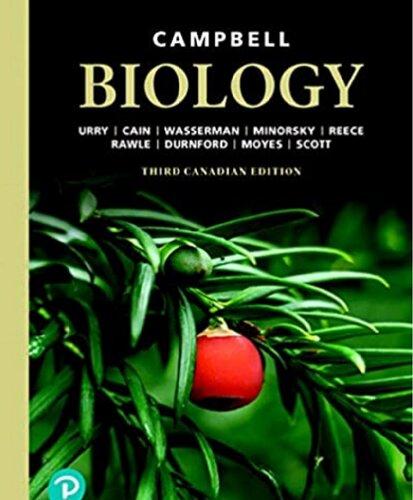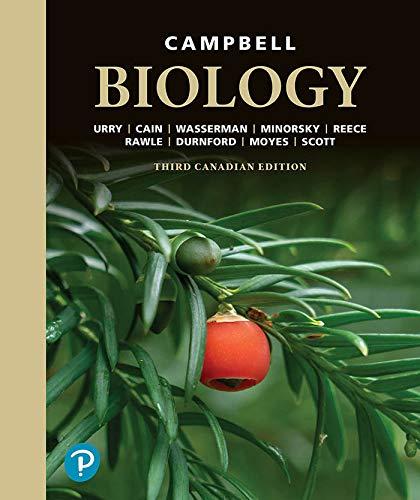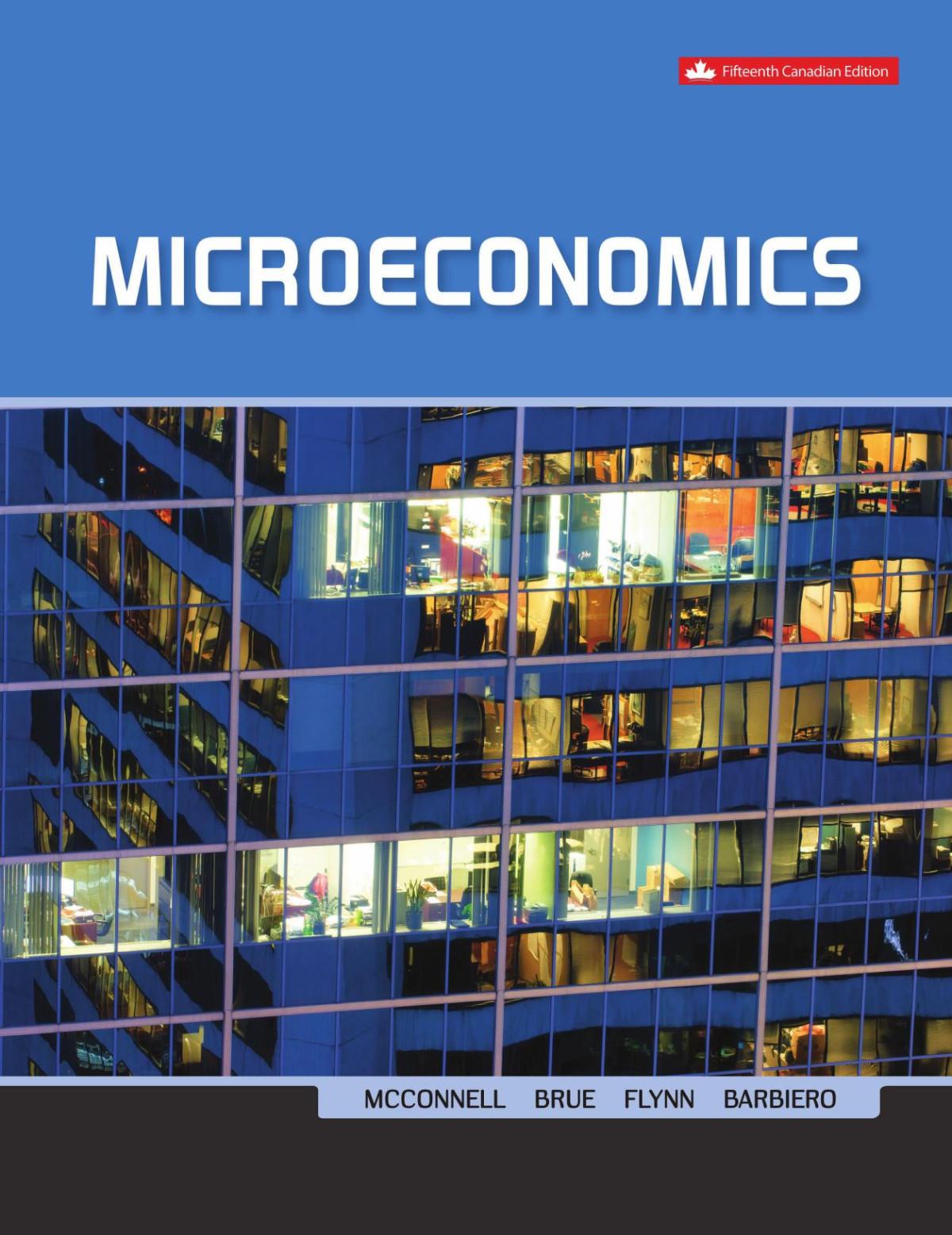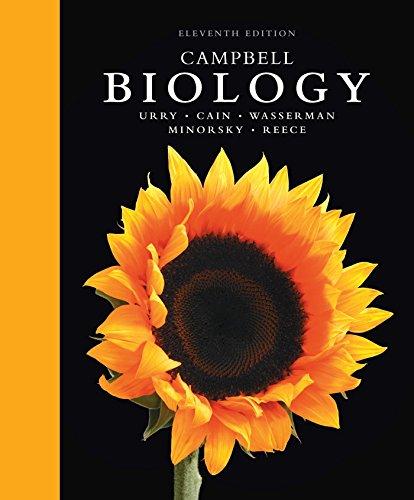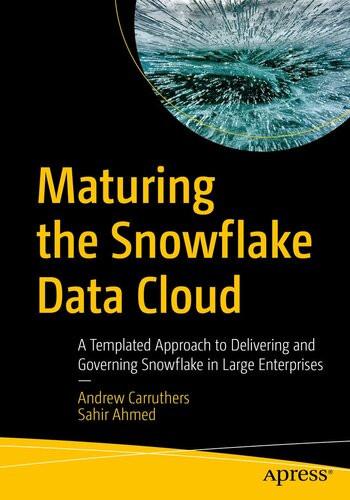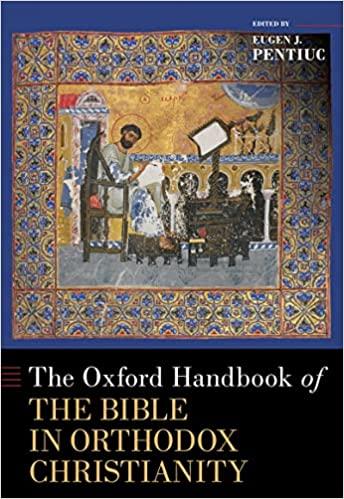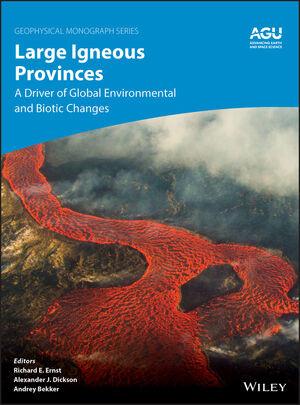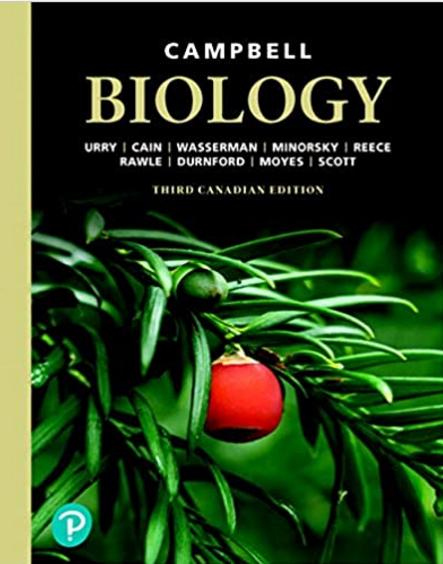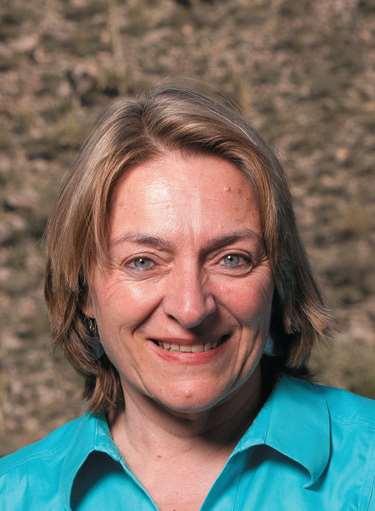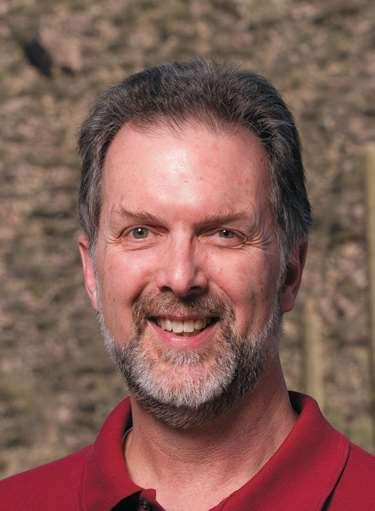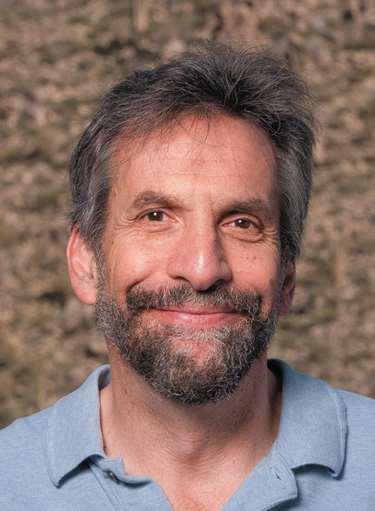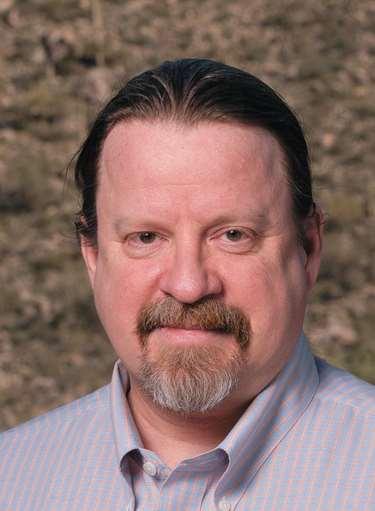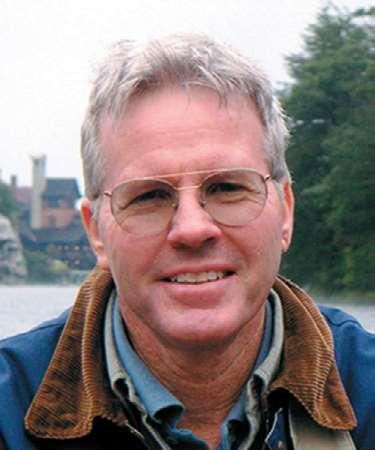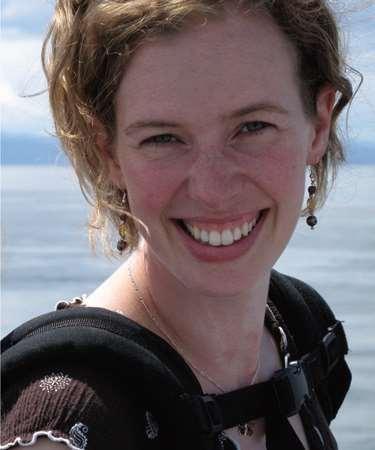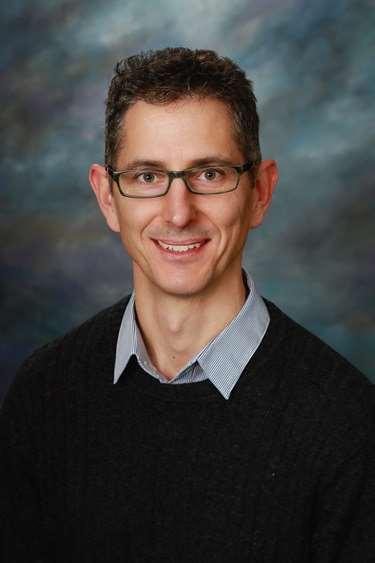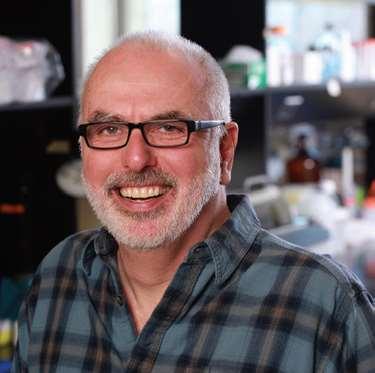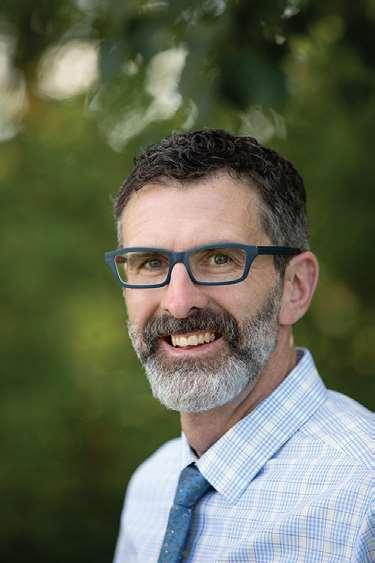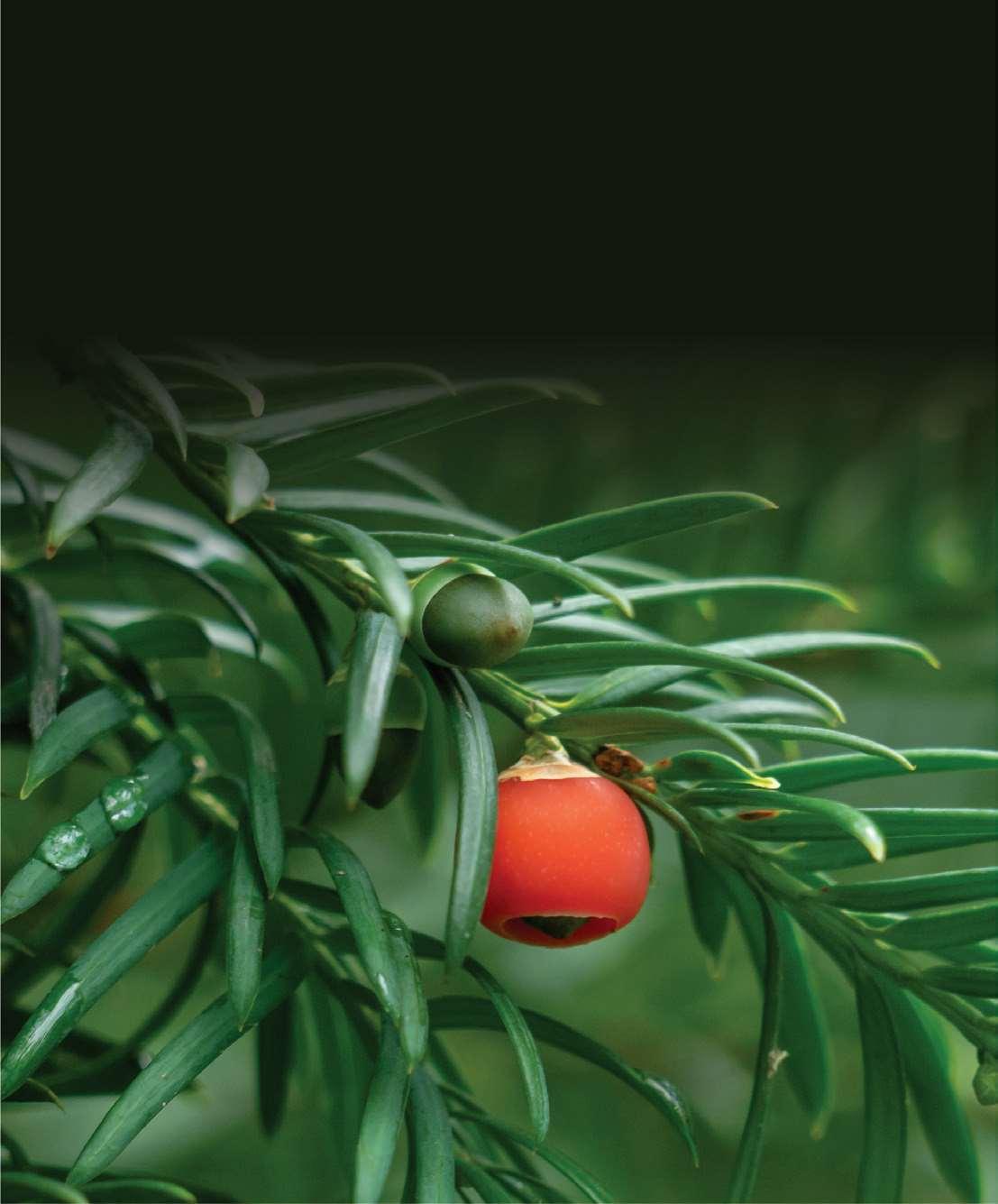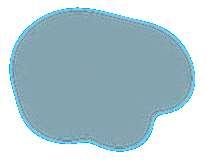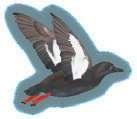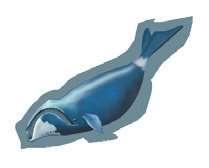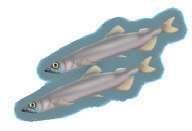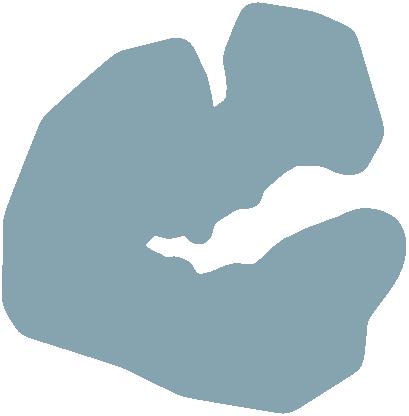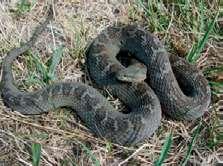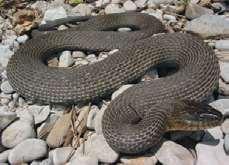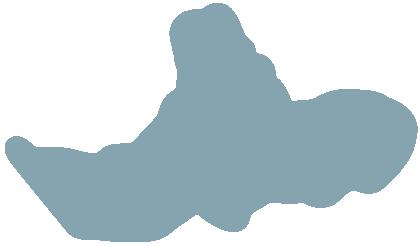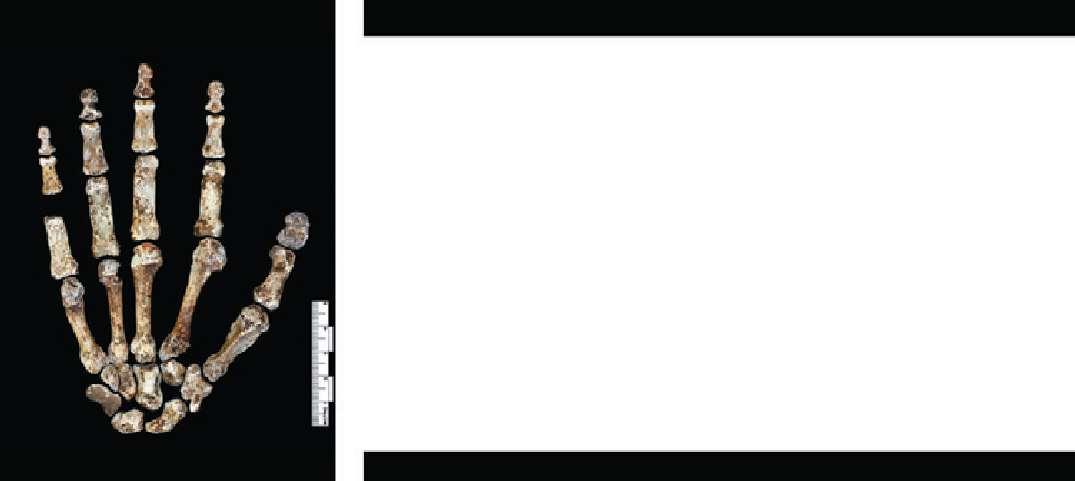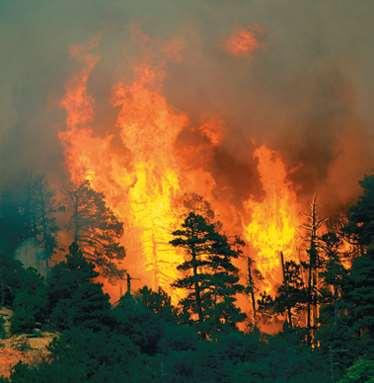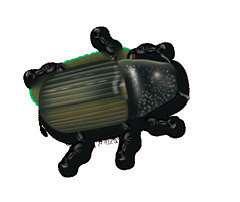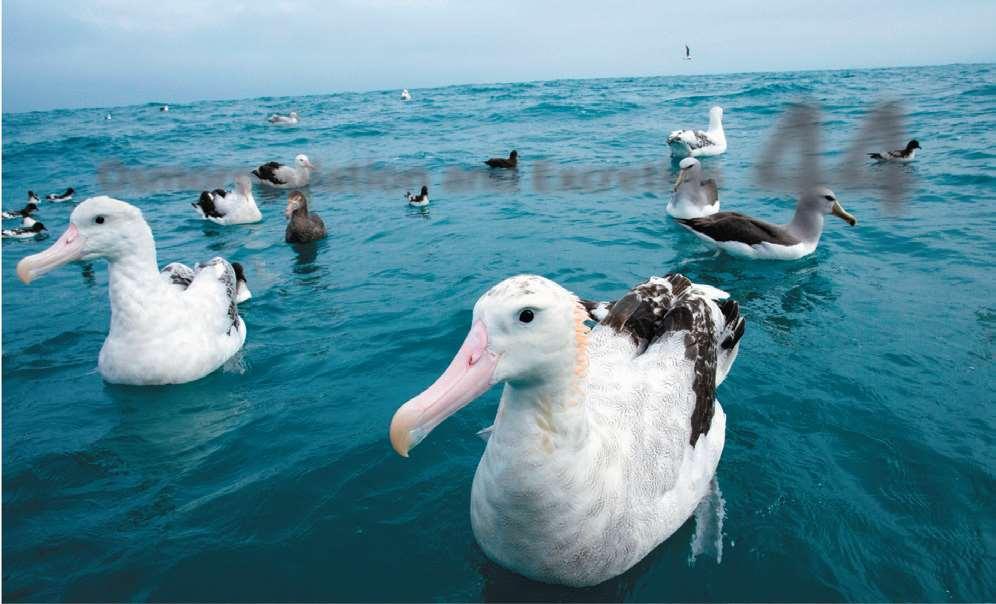Detailed Contents
1 Evolution, the Themes of Biology, and Scientific Inquiry 1
Inquiring About Life 1
CONCEPT 1.1 The study of life reveals common themes 3
Theme: New Properties Emerge at Successive Levels of Biological Organization 3
Theme: Life’s Processes Involve the Expression and Transmission of Genetic Information 6
Theme: Life Requires the Transfer and Transformation of Energy and Matter 8
Theme: From Molecules to Ecosystems, Interactions Are Important in Biological Systems 9
CONCEPT 1.2 The Core Theme: Evolution accounts for the unity and diversity of life 11
Classifying the Diversity of Life 11
The Tree of Life 15
CONCEPT 1.3 In studying nature, scientists make observations and form and test hypotheses 16
Exploration and Observation 16
Forming and Testing Hypotheses 17
The Flexibility of the Scientific Process 18
A Case Study in Scientific Inquiry: Investigating Coat Colouration in Mouse Populations 18
Theories in Science 21
CONCEPT 1.4 Science benefits from a cooperative approach and diverse viewpoints 22
Building on the Work of Others 22
Science, Technology, and Society 23
The Value of Diverse Viewpoints in Science 24
UNIT 1 THE CHEMISTRY OF LIFE 27
Interview: Roberta Hamme 27
2 The Chemical Context of Life 30
A Chemical Connection to Biology 30
CONCEPT 2.1 Matter consists of chemical elements in pure form and in combinations called compounds 31 Elements and Compounds 31
The Elements of Life 31
Case Study: Evolution of Tolerance to Toxic Elements 32
CONCEPT 2.2 An element’s properties depend on the structure of its atoms 32
Subatomic Particles 32
Atomic Number and Atomic Mass 33
Isotopes 33
The Energy Levels of Electrons 34
Electron Distribution and Chemical Properties 36
Electron Orbitals 37
CONCEPT 2.3 The formation and function of molecules depend on chemical bonding between atoms 38
Covalent Bonds 38
Ionic Bonds 40
Weak Chemical Interactions 41
Molecular Shape and Function 42
CONCEPT 2.4 Chemical reactions make and break chemical bonds 43
3 Water and Life 47
The Molecule That Supports All of Life 47
CONCEPT 3.1 Polar covalent bonds in water molecules result in hydrogen bonding 48
CONCEPT 3.2 Four emergent properties of water contribute to Earth’s suitability for life 48
Cohesion of Water Molecules 48
Moderation of Temperature by Water 49
Floating of Ice on Liquid Water 51
Water: The Solvent of Life 51
Possible Evolution of Life on Other Planets 53
CONCEPT 3.3 Acidic and basic conditions affect living organisms 54
Acids and Bases 54
The pH Scale 55
Buffers 56
Acidification: A Threat to Our Oceans 56
4 Carbon and the Molecular Diversity of Life 60
Carbon: The Backbone of Life 60
CONCEPT 4.1 Organic chemistry is the study of carbon compounds 61
Organic Molecules and the Origin of Life on Earth 61
CONCEPT 4.2 Carbon atoms can form diverse molecules by bonding to four other atoms 62
The Formation of Bonds with Carbon 63
Molecular Diversity Arising from Variation in Carbon Skeletons 64
CONCEPT 4.3 A few chemical groups are key to molecular function 67
The Chemical Groups Most Important in the Processes of Life 67
ATP: An Important Source of Energy for Cellular Processes 67
The Chemical Elements of Life: A Review 67
5 The Structure and Function of Large Biological Molecules 72
The Molecules of Life 72
CONCEPT 5.1 Macromolecules are polymers, built from monomers 73
The Synthesis and Breakdown of Polymers 73
The Diversity of Polymers 73
CONCEPT 5.2 Carbohydrates serve as fuel and building material 74
Sugars 74
Polysaccharides 76
CONCEPT 5.3 Lipids are a diverse group of hydrophobic molecules 78
Fats 78
Phospholipids 80
Steroids 81
CONCEPT 5.4 Proteins include a diversity of structures, resulting in a wide range of functions 81
Amino Acid Monomers 81
Polypeptides (Amino Acid Polymers) 84
Protein Structure and Function 84
CONCEPT 5.5 Nucleic acids store, transmit, and help express hereditary information 90
The Roles of Nucleic Acids 90
The Components of Nucleic Acids 90
Nucleotide Polymers 91
The Structures of DNA and RNA Molecules 92
CONCEPT 5.6 Genomics and proteomics have transformed biological inquiry and applications 93
DNA and Proteins as Tape Measures of Evolution 93
UNIT 2 THE CELL 99
Interview: Jason Treberg 99
6 A Tour of the Cell 103
The Fundamental Units of Life 103
CONCEPT 6.1 Biologists use microscopes and the tools of biochemistry to study cells 104
Microscopy 104
Cell Fractionation 106
CONCEPT 6.2 Eukaryotic cells have internal membranes that compartmentalize their functions 107
Comparing Prokaryotic and Eukaryotic Cells 107
A Panoramic View of the Eukaryotic Cell 109
CONCEPT 6.3 The eukaryotic cell’s genetic instructions are housed in the nucleus and carried out by the ribosomes 112
The Nucleus: Information Central 112
Ribosomes: Protein Factories 112
CONCEPT 6.4 The endomembrane system regulates protein traffic and performs metabolic functions 114
The Endoplasmic Reticulum: Biosynthetic Factory 114
The Golgi Apparatus: Shipping and Receiving Centre 116
Lysosomes: Digestive Compartments 117
Vacuoles: Diverse Maintenance Compartments 118
The Endomembrane System: A Review 118
CONCEPT 6.5 Mitochondria and chloroplasts change energy from one form to another 119
The Evolutionary Origins of Mitochondria and Chloroplasts 119
Mitochondria: Chemical Energy Conversion 120
Chloroplasts: Capture of Light Energy 120
Peroxisomes: Oxidation 122
CONCEPT 6.6 The cytoskeleton is a network of fibres that organizes structures and activities in the cell 122
Roles of the Cytoskeleton: Support and Motility 122
Components of the Cytoskeleton 123
CONCEPT 6.7 Extracellular components and connections between cells help coordinate cellular activities 128
Cell Walls of Plants 128
The Extracellular Matrix (ECM) of Animal Cells 128
Cell Junctions 129
CONCEPT 6.8 A cell is greater than the sum of its parts 131
7 Membrane Structure and Function 137
Life at the Edge 137
CONCEPT 7.1 Cellular membranes are fluid mosaics of lipids and proteins 138
The Fluidity of Membranes 139
Evolution of Differences in Membrane Lipid Composition 140
Membrane Proteins and Their Functions 140
The Role of Membrane Carbohydrates in Cell-Cell Recognition 141
Synthesis and Sidedness of Membranes 142
CONCEPT 7.2 Membrane structure results in selective permeability 142
The Permeability of the Lipid Bilayer 143 Transport Proteins 143
CONCEPT 7.3 Passive transport is diffusion of a substance across a membrane with no energy investment 143
Effects of Osmosis on Water Balance 144
Facilitated Diffusion: Passive Transport Aided by Proteins 146
CONCEPT 7.4 Active transport uses energy to move solutes against their gradients 147
The Need for Energy in Active Transport 147
How Ion Pumps Maintain Membrane Potential 148
Cotransport: Coupled Transport by a Membrane Protein 149
CONCEPT 7.5 Bulk transport across the plasma membrane occurs by exocytosis and endocytosis 150
Exocytosis 150
Endocytosis 150
8 An Introduction to Metabolism 155
The Energy of Life 155
CONCEPT 8.1 An organism’s metabolism transforms matter and energy, subject to the laws of thermodynamics 156
Organization of the Chemistry of Life into Metabolic Pathways 156
Forms of Energy 156
The Laws of Energy Transformation 157
CONCEPT 8.2 The free-energy change of a reaction tells us whether or not the reaction occurs spontaneously 159
Free Energy Change, 𝚫 G 159
Free Energy, Stability, and Equilibrium 159
Free Energy and Metabolism 160
CONCEPT 8.3 ATP powers cellular work by coupling exergonic reactions to endergonic reactions 162
The Structure and Hydrolysis of ATP 162
How the Hydrolysis of ATP Performs Work 163
The Regeneration of ATP 164
CONCEPT 8.4 Enzymes speed up metabolic reactions by lowering energy barriers 165
The Activation Energy Barrier 165
How Enzymes Speed Up Reactions 166
Substrate Specificity of Enzymes 167
Catalysis in the Enzyme’s Active Site 167
Effects of Local Conditions on Enzyme Activity 168
The Evolution of Enzymes 171
CONCEPT 8.5 Regulation of enzyme activity helps control metabolism 171
Allosteric Regulation of Enzymes 171
Localization of Enzymes within the Cell 173
9 Cellular Respiration and Fermentation 176
Life Is Work 176
CONCEPT 9.1 Catabolic pathways yield energy by oxidizing organic fuels 177
Catabolic Pathways and Production of ATP 177
Redox Reactions: Oxidation and Reduction 177
The Stages of Cellular Respiration: A Preview 180
CONCEPT 9.2 Glycolysis harvests chemical energy by oxidizing glucose to pyruvate 182
CONCEPT 9.3 After pyruvate is oxidized, the citric acid cycle completes the energy-yielding oxidation of organic molecules 183
Oxidation of Pyruvate to Acetyl CoA 183
The Citric Acid Cycle 184
CONCEPT 9.4 During oxidative phosphorylation, chemiosmosis couples electron transport to ATP synthesis 186
The Pathway of Electron Transport 186
Chemiosmosis: The Energy-Coupling Mechanism 187
An Accounting of ATP Production by Cellular Respiration 189
CONCEPT 9.5 Fermentation and anaerobic respiration enable cells to produce ATP without the use of oxygen 192
Types of Fermentation 192
Comparing Fermentation with Anaerobic and Aerobic Respiration 193
The Evolutionary Significance of Glycolysis 193
CONCEPT 9.6 Glycolysis and the citric acid cycle connect to many other metabolic pathways 194
The Versatility of Catabolism 194
Biosynthesis (Anabolic Pathways) 195
Regulation of Cellular Respiration via Feedback Mechanisms 195
10 Photosynthesis 199
The Process That Feeds the Biosphere 199
CONCEPT 10.1 Photosynthesis converts light energy to the chemical energy of food 201
Chloroplasts: The Sites of Photosynthesis in Plants 201
Tracking Atoms through Photosynthesis: Scientific Inquiry 202
The Two Stages of Photosynthesis: A Preview 203
CONCEPT 10.2 The light reactions convert solar energy to the chemical energy of ATP and NADPH 204
The Nature of Sunlight 204
Photosynthetic Pigments: The Light Receptors 205
Excitation of Chlorophyll by Light 207
A Photosystem: A Reaction-Centre Complex Associated with Light-Harvesting Complexes 207
Linear Electron Flow 209
Cyclic Electron Flow 210
A Comparison of Chemiosmosis in Chloroplasts and Mitochondria 211
CONCEPT 10.3 The Calvin cycle uses the chemical energy of ATP and NADPH to reduce CO2 to sugar 213
CONCEPT 10.4 Alternative mechanisms of carbon fixation have evolved in hot, arid climates 215
Photorespiration: An Evolutionary Relic? 215
C4 Plants 215
CAM Plants 217
CONCEPT 10.5 Life depends on photosynthesis 218
The Importance of Photosynthesis: A Review 218
11 Cell Communication 222
Cellular Messaging 222
CONCEPT 11.1 External signals are converted to responses within the cell 223
Evolution of Cell Signalling 223
Local and Long-Distance Signalling 225
The Three Stages of Cell Signalling: A Preview 226
CONCEPT 11.2 Reception: A signalling molecule binds to a receptor protein, causing it to change shape 227
Receptors in the Plasma Membrane 227
Intracellular Receptors 230
CONCEPT 11.3 Transduction: Cascades of molecular interactions relay signals from receptors to target molecules in the cell 231
Signal Transduction Pathways 231
Protein Phosphorylation and Dephosphorylation 232
Small Molecules and Ions as Second Messengers 233
CONCEPT 11.4 Response: Cell signalling leads to regulation of transcription or cytoplasmic activities 236
Nuclear and Cytoplasmic Responses 236
Regulation of the Response 236
CONCEPT 11.5 Apoptosis integrates multiple cell-signalling pathways 240
Apoptosis in the Soil Worm Caenorhabditis elegans 241
Apoptotic Pathways and the Signals That Trigger Them 241
12 The Cell Cycle 246
The Key Roles of Cell Division 246
CONCEPT 12.1 Most cell division results in genetically identical daughter cells 247
Cellular Organization of the Genetic Material 247
Distribution of Chromosomes During Eukaryotic Cell Division 248
CONCEPT 12.2 The mitotic phase alternates with interphase in the cell cycle 249
Phases of the Cell Cycle 249
The Mitotic Spindle: A Closer Look 249
Cytokinesis: A Closer Look 253
Binary Fission in Bacteria 254
The Evolution of Mitosis 255
CONCEPT 12.3 The eukaryotic cell cycle is regulated by a molecular control system 256
The Cell Cycle Control System 256
Loss of Cell Cycle Controls in Cancer Cells 261
Interview: Julie Claycomb 267
13 Meiosis and Sexual Life Cycles 270
Variations on a Theme 270
CONCEPT 13.1 Offspring acquire genes from parents by inheriting chromosomes 271
Inheritance of Genes 271
Comparison of Asexual and Sexual Reproduction 271
CONCEPT 13.2 Fertilization and meiosis alternate in sexual life cycles 272
Sets of Chromosomes in Human Cells 272
Behaviour of Chromosome Sets in the Human Life Cycle 273
The Variety of Sexual Life Cycles 274
CONCEPT 13.3 Meiosis reduces the number of chromosome sets from diploid to haploid 275
The Stages of Meiosis 275
Crossing Over and Synapsis During Prophase I 278
A Comparison of Mitosis and Meiosis 278
CONCEPT 13.4 Genetic variation produced in sexual life cycles contributes to evolution 281
Origins of Genetic Variation Among Offspring 281
The Evolutionary Significance of Genetic Variation Within Populations 282
14 Mendel and the Gene Idea 285
Drawing from the Deck of Genes 285
CONCEPT 14.1 Mendel used the scientific approach to identify two laws of inheritance 286
Mendel’s Experimental, Quantitative Approach 286
The Law of Segregation 287
The Law of Independent Assortment 290
CONCEPT 14.2 Probability laws govern Mendelian inheritance 292
The Multiplication and Addition Rules Applied to Monohybrid Crosses 293
Solving Complex Genetics Problems with the Rules of Probability 293
CONCEPT 14.3 Inheritance patterns are often more complex than predicted by simple Mendelian genetics 294
Extending Mendelian Genetics for a Single Gene 294
Extending Mendelian Genetics for Two or More Genes 297
Nature and Nurture: The Environmental Impact on Phenotype 298
A Mendelian View of Heredity and Variation 299
CONCEPT 14.4 Many human traits follow Mendelian patterns of inheritance 300
Pedigree Analysis 300
Recessively Inherited Disorders 301
Dominantly Inherited Disorders 303
Multifactorial Disorders 304
Genetic Testing and Counselling 304
15 The Chromosomal Basis of Inheritance 312
Locating Genes Along Chromosomes 312
CONCEPT 15.1 Morgan showed that Mendelian inheritance has its physical basis in the behaviour of chromosomes: Scientific Inquiry 314
CONCEPT 15.2 Sex-linked genes exhibit unique patterns of inheritance 315
The Chromosomal Basis of Sex 316
Inheritance of X-Linked Genes 317
X Inactivation in Female Mammals 318
CONCEPT 15.3 Linked genes tend to be inherited together because they are located near each other on the same chromosome 319
How Linkage Affects Inheritance 319
Genetic Recombination and Linkage 320
Mapping the Distance Between Genes Using Recombination Data: Scientific Inquiry 323
CONCEPT 15.4 Alterations of chromosome number or structure cause some genetic disorders 325
Abnormal Chromosome Number 325
Alterations of Chromosome Structure 326
Human Disorders Due to Chromosomal Alterations 327
CONCEPT 15.5 Some inheritance patterns are exceptions to standard Mendelian inheritance 329
Genomic Imprinting 329
Inheritance of Organelle Genes 330
16 The Molecular Basis of Inheritance 334
Life’s Operating Instructions 334
CONCEPT 16.1 DNA is the genetic material 335
The Search for the Genetic Material: Scientific Inquiry 335
Building a Structural Model of DNA: Scientific Inquiry 337
CONCEPT 16.2 Many proteins work together in DNA replication and repair 340
The Basic Principle: Base Pairing to a Template Strand 340
DNA Replication: A Closer Look 342
Proofreading and Repairing DNA 346
Evolutionary Significance of Altered DNA Nucleotides 348
Replicating the Ends of DNA Molecules 348
CONCEPT 16.3 A chromosome consists of a DNA molecule packed together with proteins 350
17 Gene Expression: From Gene to Protein 355
The Flow of Genetic Information 355
CONCEPT 17.1 Genes specify proteins via transcription and translation 356
Evidence from the Study of Metabolic Defects 356
Basic Principles of Transcription and Translation 357
The Genetic Code 359
CONCEPT 17.2 Transcription is the DNA-directed synthesis of RNA: A closer look 362
Molecular Components of Transcription 362
Synthesis of an RNA Transcript 362
CONCEPT 17.3 Eukaryotic cells modify RNA after transcription 365
Alteration of mRNA Ends 365
Split Genes and RNA Splicing 365
CONCEPT 17.4 Translation is the RNA-directed synthesis of a polypeptide: A closer look 367
Molecular Components of Translation 368
Building a Polypeptide 370
Completing and Targeting the Functional Protein 372
Making Multiple Polypeptides in Bacteria and Eukaryotes 375
CONCEPT 17.5 Mutations of one or a few nucleotides can affect protein structure and function 377
Types of Small-Scale Mutations 377
New Mutations and Mutagens 378
What Is a Gene? Revisiting the Question 380
18 Regulation of Gene Expression 385
Beauty in the Eye of the Beholder 385
CONCEPT 18.1 Bacteria often respond to environmental change by regulating transcription 386
Operons: The Basic Concept 386
Repressible and Inducible Operons: Two Types of Negative Gene Regulation 388
Positive Gene Regulation 389
CONCEPT 18.2 Eukaryotic gene expression is regulated at many stages 390
Differential Gene Expression 390
Regulation of Chromatin Structure 391
Regulation of Transcription Initiation 392
Mechanisms of Post-Transcriptional Regulation 397
CONCEPT 18.3 Noncoding RNAs play multiple roles in controlling gene expression 399
Effects on mRNAs by MicroRNAs and Small Interfering RNAs 399
Chromatin Remodelling and Effects on Transcription by ncRNAs 400
The Evolutionary Significance of Small ncRNAs 401
CONCEPT 18.4 A program of differential gene expression leads to the different cell types in a multicellular organism 401
A Genetic Program for Embryonic Development 401
Cytoplasmic Determinants and Inductive Signals 402
Sequential Regulation of Gene Expression During Cellular Differentiation 403
Pattern Formation: Setting Up the Body Plan 404
CONCEPT 18.5 Cancer results from genetic changes that affect cell cycle control 408
Types of Genes Associated with Cancer 408
Interference with Normal Cell-Signalling Pathways 409
The Multistep Model of Cancer Development 411
Inherited Predisposition and Environmental Factors Contributing to Cancer 414
The Role of Viruses in Cancer 415
19 Viruses 419
A Borrowed Life 419
CONCEPT 19.1 A virus consists of a nucleic acid surrounded by a protein coat 420
The Discovery of Viruses: Scientific Inquiry 420 Structure of Viruses 420
CONCEPT 19.2 Viruses replicate only in host cells 422
General Features of Viral Replicative Cycles 422 Replicative Cycles of Phages 423 Replicative Cycles of Animal Viruses 426 Evolution of Viruses 428
CONCEPT 19.3 Viruses and prions are formidable pathogens in animals and plants 430
Viral Diseases in Animals 430
Emerging Viruses 431
Viral Diseases in Plants 435
Prions: Proteins as Infectious Agents 435
20 DNA Tools and Biotechnology 438
The DNA Toolbox 438
CONCEPT 20.1 DNA sequencing and DNA cloning are valuable tools for genetic engineering and biological inquiry 439
DNA Sequencing 439
Making Multiple Copies of a Gene or Other DNA Segment 441
Using Restriction Enzymes to Make a Recombinant DNA Plasmid 442
Amplifying DNA: The Polymerase Chain Reaction (PCR) and Its Use in DNA Cloning 443
Expressing Cloned Eukaryotic Genes 445
CONCEPT 20.2 Biologists use DNA technology to study gene expression and function 446
Analyzing Gene Expression 446
Determining Gene Function 450
CONCEPT 20.3 Cloned organisms and stem cells are useful for basic research and other applications 452
Cloning Plants: Single-Cell Cultures 453
Cloning Animals: Nuclear Transplantation 453
Stem Cells of Animals 455
CONCEPT 20.4 The practical applications of DNA-based biotechnology affect our lives in many ways 458
Medical Applications 458
Forensic Evidence and Genetic Profiles 461
Environmental Cleanup 462
Agricultural Applications 462
Safety and Ethical Questions Raised by DNA Technology 463
21 Genomes and Their Evolution 468
Combining Genomics with Traditional Ecological Knowledge 468
CONCEPT 21.1 The Human Genome Project fostered development of faster, less expensive sequencing techniques 469
CONCEPT 21.2 Scientists use bioinformatics to analyze genomes and their functions 470
Centralized Resources for Analyzing Genome Sequences 470
Identifying Protein-Coding Genes and Understanding Their Functions 471
Understanding Genes and Gene Expression at the Systems Level 472
CONCEPT 21.3 Genomes vary in size, number of genes, and gene density 474
Genome Size 474
Number of Genes 475
Gene Density and Noncoding DNA 475
CONCEPT 21.4 Multicellular eukaryotes have a lot of noncoding DNA and many multigene families 478
Transposable Elements and Related Sequences 478
Other Repetitive DNA, Including Simple Sequence DNA 480 Genes and Multigene Families 480
CONCEPT 21.5 Duplication, rearrangement, and mutation of DNA contribute to genome evolution 482
Duplication of Entire Chromosome Sets 482
Alterations of Chromosome Structure 482
Duplication and Divergence of Gene-Sized Regions of DNA 483
Rearrangements of Parts of Genes: Exon Duplication and Exon Shuffling 484
How Transposable Elements Contribute to Genome Evolution 487
CONCEPT 21.6 Comparing genome sequences provides clues to evolution and development 487
Comparing Genomes 487
UNIT 4 MECHANISMS OF EVOLUTION 495
Interview: Maydianne Andrade 495
22 Descent with Modification: A Darwinian View of Life 498
“Endless Forms Most Beautiful”—Charles Darwin 498
CONCEPT 22.1 The Darwinian revolution challenged traditional views of a young Earth inhabited by unchanging species 499
Scala Naturae and Classification of Species 500
Ideas About Change over Time 500
Lamarck’s Hypothesis of Evolution 500
CONCEPT 22.2 Descent with modification by natural selection explains the adaptations of organisms and the unity and diversity of life 501
Darwin’s Research 501
CONCEPT 22.3 Evolution is supported by an overwhelming amount of scientific evidence 506
Direct Observations of Evolutionary Change 507
Homology 509
The Fossil Record 511
Biogeography 512
What Is Theoretical about Darwin’s View of Life? 513
23 The Evolution of Populations 517
The Smallest Unit of Evolution 517
CONCEPT 23.1 Genetic variation makes evolution possible 518
Genetic Variation 518
Sources of Genetic Variation 519
CONCEPT 23.2 The Hardy-Weinberg equation can be used to test whether a population is evolving 520
Gene Pools and Allele Frequencies 521
The Hardy-Weinberg Equation 521
CONCEPT 23.3 Natural selection, genetic drift, and gene flow can alter allele frequencies in a population 524
Natural Selection 525
Genetic Drift 525
Gene Flow 527
CONCEPT 23.4 Natural selection is the only mechanism that consistently causes adaptive evolution 528
Natural Selection: A Closer Look 528
The Key Role of Natural Selection in Adaptive Evolution 530
Sexual Selection 530
Balancing Selection 531
Frequency-Dependent Selection 531
Heterozygote Advantage 532
Why Natural Selection Cannot Fashion Perfect Organisms 532
24 The Origin of Species 536
That “Mystery of Mysteries” 536
CONCEPT 24.1 The biological species concept emphasizes reproductive isolation 537
The Biological Species Concept 537
Other Definitions of Species 540
CONCEPT 24.2 Speciation can take place with or without geographic separation 541
Allopatric (“Other Country”) Speciation 541
Sympatric (“Same Country”) Speciation 543
Allopatric and Sympatric Speciation: A Review 546
CONCEPT 24.3 Hybrid zones reveal factors that cause reproductive isolation 546
Patterns Within Hybrid Zones 546
Hybrid Zones and Environmental Change 547
Hybrid Zones over Time 547
CONCEPT 24.4 Speciation can occur rapidly or slowly and can result from changes in few or many genes 550
The Time Course of Speciation 550
Studying the Genetics of Speciation 552
From Speciation to Macroevolution 553
25 The History of Life on Earth 555
Dinosaurs of a Feather 555
CONCEPT 25.1 Conditions on early Earth made the origin of life possible 556
Synthesis of Organic Compounds on Early Earth 556
Abiotic Synthesis of Macromolecules 557
Protocells 557
Self-Replicating RNA 558
CONCEPT 25.2 The fossil record documents the history of life 558
The Fossil Record 558
How Rocks and Fossils Are Dated 560
The Origin of New Groups of Organisms 560
CONCEPT 25.3 Key events in life’s history include the origins of unicellular and multicelled organisms and the colonization of land 562
The First Single-Celled Organisms 564
The Origin of Multicellularity 565
The Colonization of Land 566
CONCEPT 25.4 The rise and fall of groups of organisms reflect differences in speciation and extinction rates 567
Plate Tectonics 568
Mass Extinctions 570
Adaptive Radiations 572
CONCEPT 25.5 Major changes in body form can result from changes in the sequences and regulation of developmental genes 574
Effects of Developmental Genes 575
The Evolution of Development 576
CONCEPT 25.6 Evolution is not goal oriented 578
Evolutionary Novelties 578
Evolutionary Trends 579
UNIT 5 THE EVOLUTIONARY HISTORY OF BIOLOGICAL DIVERSITY 583
Interview: Laura Hug 583
26 Phylogeny and the Tree of Life 586
Investigating the Tree of Life 586
CONCEPT 26.1 Phylogenies show evolutionary relationships 587
Binomial Nomenclature 588
Hierarchical Classification 588
Linking Classification and Phylogeny 589
Visualizing Phylogenetic Relationships 589
CONCEPT 26.2 Phylogenies are inferred from morphological and molecular data 591
Morphological and Molecular Homologies 591
Sorting Homology from Analogy 591
Evaluating Molecular Homologies 591
CONCEPT 26.3 Shared characters are used to construct phylogenetic trees 592
Cladistics 592
Maximum Parsimony and Maximum Likelihood 594
Interpreting Phylogenetic Trees 595
Applying Phylogenies 597
CONCEPT 26.4 An organism’s evolutionary history is documented in its genome 599
Gene Duplications and Gene Families 599
Genome Evolution 600
CONCEPT 26.5 Molecular clocks help track evolutionary time 600
Molecular Clocks 600
Applying a Molecular Clock: The Origin of HIV 601
CONCEPT 26.6 Our understanding of the tree of life continues to change based on new data 602
From Two Kingdoms to Three Domains 602
The Important Role of Horizontal Gene Transfer 603
27 Bacteria and Archaea 607
Masters of Adaptation 607
CONCEPT 27.1 Structural and functional adaptations contribute to prokaryotic success 608
Cell-Surface Structures 608
Endospores 609
Motility 610
Internal Organization and DNA 611
Reproduction 612
CONCEPT 27.2 Rapid reproduction, mutation, and genetic recombination promote genetic diversity in prokaryotes 612
Rapid Reproduction and Mutation 612
Genetic Recombination 612
CONCEPT 27.3 Diverse nutritional and metabolic adaptations have evolved in prokaryotes 615
The Role of Oxygen in Metabolism 616
Nitrogen Metabolism 616
Metabolic Cooperation 616
CONCEPT 27.4 Prokaryotes have radiated into a diverse set of lineages 617
An Overview of Prokaryotic Diversity 617
Bacteria 620
Archaea 620
CONCEPT 27.5 Prokaryotes play crucial roles in the biosphere 621
Chemical Recycling 621
Ecological Interactions 622
CONCEPT 27.6 Prokaryotes have both beneficial and harmful impacts on humans 623
Mutualistic Bacteria 623
Pathogenic Bacteria 623
Prokaryotes in Research and Technology 624
28 Protists 628
You Are What You Eat 628
CONCEPT 28.1 Most eukaryotes are single-celled organisms 629
Structural and Functional Diversity in Protists 629
Four Supergroups of Eukaryotes 629
Endosymbiosis in Eukaryotic Evolution 632
Endosymbiosis and the Spread of Photosynthesis 632
How Does an Endosymbiont Evolve into an Organelle? 633
CONCEPT 28.2 Excavates include protists with modified mitochondria and protists with unique flagella 635
Diplomonads and Parabasalids 635
Euglenozoans 635
CONCEPT 28.3 SAR is a highly diverse group of protists defined by DNA similarities 637
Stramenopiles 637
Oomycetes (Water Moulds and Their Relatives) 639
Alveolates 640
Rhizarians 641
CONCEPT 28.4 Red algae and green algae are the closest relatives of land plants 645
Red Algae 645
Green Algae 645
CONCEPT 28.5 Unikonts include protists that are closely related to fungi and animals 647
Amoebozoans 648
Opisthokonts 650
CONCEPT 28.6 The relationships of some protists to other eukaryotes is uncertain 650
Haptophytes 650
Cryptomonads 651
CONCEPT 28.7 Protists play key roles in ecological communities 652
Symbiotic Protists 652
Photosynthetic Protists 652
29 Plant Diversity I: How Plants
Colonized Land 657
The Greening of Earth 657
CONCEPT 29.1 Plants evolved from green algae 658
Morphological and Molecular Evidence 658
Adaptations Enabling the Move to Land 658
Derived Traits of Plants 659
The Origin and Diversification of Plants 659
CONCEPT 29.2 Mosses and other nonvascular plants have life cycles dominated by gametophytes 663
Bryophyte Gametophytes 664
Bryophyte Sporophytes 666
The Ecological and Economic Importance of Mosses 666
CONCEPT 29.3 Ferns and other seedless vascular plants were the first plants to grow tall 668
Origins and Traits of Vascular Plants 668
Classification of Seedless Vascular Plants 672
The Significance of Seedless Vascular Plants 672
30 Plant Diversity II: The Evolution of Seed Plants 678
Transforming the World 678
CONCEPT 30.1 Seeds and pollen grains are key adaptations for life on land 679
Advantages of Reduced Gametophytes 679
Heterospory: The Rule Among Seed Plants 680
Ovules and Production of Eggs 680
Pollen and Production of Sperm 680
The Evolutionary Advantage of Seeds 681
Evolution of the Seed 682
CONCEPT 30.2 Gymnosperms bear “naked” seeds, typically on cones 682
The Life Cycle of a Pine 682
Evolution of Gymnosperms 686
Gymnosperm Diversity 686
CONCEPT 30.3 The reproductive adaptations of angiosperms include flowers and fruits 686
Characteristics of Angiosperms 686
Angiosperm Evolution 690
Evolutionary Links Between Angiosperms and Animals 692
Angiosperm Diversity 692
CONCEPT 30.4 Human welfare depends greatly on seed plants 695
Products from Seed Plants 695
Threats to Plant Diversity 695
31 Fungi 698
Brewer’s Yeast and Climate Change 698
CONCEPT 31.1 Fungi are heterotrophs that feed by absorption 699
Nutrition and Ecology 699
Body Structure 699
Specialized Hyphae in Mycorrhizal Fungi 700
CONCEPT 31.2 Fungi produce spores through sexual or asexual life cycles 702
Sexual Reproduction 702
Asexual Reproduction 702
CONCEPT 31.3 The ancestor of fungi was an aquatic, singlecelled, flagellated protist 703
The Origin of Fungi 703
Basal Fungal Groups 703
The Move to Land 704
CONCEPT 31.4 Fungi have radiated into a diverse set of lineages 704
Chytrids 704
Zygomycetes 706
Glomeromycetes 707
Ascomycetes 707
Basidiomycetes 709
CONCEPT 31.5 Fungi play key roles in nutrient cycling, ecological interactions, and human welfare 711
Fungi as Decomposers (Saprotrophs) 711
Fungi as Mutualists 711
Fungi as Parasites 712
Practical Uses of Fungi 714
32 An Overview of Animal Diversity 717
Welcome to Your Kingdom 717
CONCEPT 32.1 Animals are multicellular, heterotrophic eukaryotes with tissues that develop from embryonic layers 718
Nutritional Mode 718
Cell Structure and Specialization 718
Reproduction and Development 718
CONCEPT 32.2 The history of animals spans more than half a billion years 719
Steps in the Origin of Multicellular Animals 719
Neoproterozoic Era (1 Billion–542 Million Years Ago) 720
Paleozoic Era (542–251 Million Years Ago) 720
Mesozoic Era (251–65.5 Million Years Ago) 722
Cenozoic Era (65.5 Million Years Ago to the Present) 722
CONCEPT 32.3 Animals can be characterized by “body plans” 723
Symmetry 724
Tissues 724
Body Cavities 724
Protostome and Deuterostome Development 725
CONCEPT 32.4 Views of animal phylogeny continue to be shaped by new molecular and morphological data 726
The Diversification of Animals 726
Future Directions in Animal Systematics 728
33 An Introduction to Invertebrates 731
Life Without a Backbone 731
CONCEPT 33.1 Sponges are basal animals that lack true tissues 735
CONCEPT 33.2 Cnidarians are an ancient phylum of eumetazoans 736
Medusozoans 737
Anthozoans 737
CONCEPT 33.3 Lophotrochozoans, a clade identified by molecular data, have the widest range of animal body forms 739
Flatworms 739
Rotifers 742
Lophophorates: Ectoprocts and Brachiopods 743
Molluscs 744
Annelids 747
CONCEPT 33.4 Ecdysozoans are the most species-rich animal group 750
Nematodes 750
Arthropods 751
CONCEPT 33.5 Echinoderms and chordates are deuterostomes 759
Echinoderms 759
Chordates 761
34 The Origin and Evolution of Vertebrates 765
Half a Billion Years of Backbones 765
CONCEPT 34.1 Chordates have a notochord and a dorsal, hollow nerve cord 766
Derived Characters of Chordates 766
Lancelets 767
Tunicates 768
Early Chordate Evolution 769
CONCEPT 34.2 Vertebrates are chordates that have a backbone 769
Derived Characters of Vertebrates 769
Hagfishes and Lampreys 770
Hagfishes 770
Lampreys 770
Early Vertebrate Evolution 771
CONCEPT 34.3 Gnathostomes are vertebrates that have jaws 772
Derived Characters of Gnathostomes 772
Fossil Gnathostomes 773
Chondrichthyans (Sharks, Rays, and Their Relatives) 773
Ray-Finned Fishes and Lobe-Fins 775
CONCEPT 34.4 Tetrapods are gnathostomes that have limbs 777
Derived Characters of Tetrapods 777
The Origin of Tetrapods 777
Amphibians 779
Salamanders 779
Frogs 779
Caecilians 779
Lifestyle and Ecology of Amphibians 779
CONCEPT 34.5 Amniotes are tetrapods that have a terrestrially adapted egg 782
Derived Characters of Amniotes 782
Early Amniotes 783
Reptiles 783
CONCEPT 34.6 Mammals are amniotes that have hair and produce milk 788
Derived Characters of Mammals 789
Early Evolution of Mammals 789
Monotremes 790
Marsupials 790
Eutherians (Placental Mammals) 791
CONCEPT 34.7 Humans are mammals that have a large brain and bipedal locomotion 796
Derived Characters of Humans 796
The Earliest Hominins 797
Australopiths 797
Bipedalism 798
Tool Use 798
Early Homo 799
Neanderthals 800
UNIT 6 PLANT FORM AND FUNCTION 805
Interview: Jacqueline Monaghan 805
35 Plant Structure, Growth, and Development 808
Why Did the Palm Tree Cross the Road? 808
CONCEPT 35.1 Plants have a hierarchical organization consisting of organs, tissues, and cells 809
Basic Vascular Plant Organs: Roots, Stems, and Leaves 809
Dermal, Vascular, and Ground Plant Tissues 812
Common Types of Plant Cells 813
CONCEPT 35.2 Different meristems generate cells for primary and secondary growth 816
CONCEPT 35.3 Primary growth lengthens roots and shoots 818
Primary Growth of Roots 818
Primary Growth of Shoots 818
CONCEPT 35.4 Secondary growth increases the diameter of stems and roots in woody plants 822
The Vascular Cambium and Secondary Vascular Tissue 823
The Cork Cambium and the Production of Periderm 824
Evolution of Secondary Growth 824
CONCEPT 35.5 Growth, morphogenesis, and cell differentiation produce the plant body 825
Model Organisms: Revolutionizing the Study of Plants 826
Growth: Cell Division and Cell Expansion 826
Morphogenesis and Pattern Formation 828
Gene Expression and Control of Cell Differentiation 828
Shifts in Development: Phase Changes 829
Genetic Control of Flowering 830
36 Resource Acquisition and Transport in Vascular Plants 834
Overview 834
CONCEPT 36.1 Adaptations for acquiring resources were key steps in the evolution of vascular plants 835
Shoot Architecture and Light Capture 835
Root Architecture and Acquisition of Water and Minerals 837
CONCEPT 36.2 Different mechanisms transport substances over short or long distances 837
The Apoplast and Symplast: Transport Continuums 837
Short-Distance Transport of Solutes across Plasma Membranes 838
Short-Distance Transport of Water Across Plasma Membranes 838
Long-Distance Transport: The Role of Bulk Flow 841
CONCEPT 36.3 Transpiration drives the transport of water and minerals from roots to shoots via the xylem 842
Absorption of Water and Minerals by Root Epidermal Cells 842
Transport of Water and Minerals into the Xylem 842
Bulk Flow Transport via the Xylem 842
Xylem Sap Ascent by Bulk Flow: A Review 846
CONCEPT 36.4 The rate of transpiration is regulated by stomata 846
Stomata: Major Pathways for Water Loss 847
Mechanisms of Stomatal Opening and Closing 847
Stimuli for Stomatal Opening and Closing 848
Effects of Transpiration on Wilting and Leaf Temperature 848
Adaptations That Reduce Evaporative Water Loss 848
CONCEPT 36.5 Sugars are transported from sources to sinks via the phloem 849
Movement from Sugar Sources to Sugar Sinks 849
Bulk Flow by Positive Pressure: The Mechanism of Translocation in Angiosperms 850
CONCEPT 36.6 The symplast is highly dynamic 852
Changes in Plasmodesmatal Number and Pore Size 852
Phloem: An Information Superhighway 852
Electrical Signalling in the Phloem 852
37 Soil and Plant Nutrition 855
The Corkscrew Carnivore 855
CONCEPT 37.1 Soil contains a living, complex ecosystem 856
Soil Texture 856
Topsoil Composition 856
Soil Conservation and Sustainable Agriculture 857
CONCEPT 37.2 Plant roots absorb essential elements from the soil 860
Essential Elements 860
Symptoms of Mineral Deficiency 861
Improving Plant Nutrition by Genetic Modification 862
CONCEPT 37.3 Plant nutrition often involves relationships with other organisms 863
Bacteria and Plant Nutrition 863
Fungi and Plant Nutrition 867
Vertebrates and Plant Nutrition 868
Epiphytes, Parasitic Plants, and Carnivorous Plants 869
38 Angiosperm Reproduction and Biotechnology 873
Canola (Canadian Oil Low Acid): A Canadian Invention 873
CONCEPT 38.1 Flowers, double fertilization, and fruits are unique features of the angiosperm life cycle 874
Flower Structure and Function 874
Methods of Pollination 875
The Angiosperm Life Cycle: An Overview 875
Seed Development and Structure: A Closer Look 878
Sporophyte Development from Seed to Mature Plant 881
Fruit Structure and Function 882
CONCEPT 38.2 Flowering plants reproduce sexually, asexually, or both 883
Mechanisms of Asexual Reproduction 883
Advantages and Disadvantages of Asexual Versus Sexual Reproduction 885
Mechanisms That Prevent Self-Fertilization 886
Totipotency, Vegetative Reproduction, and Tissue Culture 887
CONCEPT 38.3 Humans modify crops by breeding and genetic engineering 888
Plant Breeding 889
Plant Biotechnology and Genetic Engineering 889
The Debate over Plant Biotechnology 891
39 Plant Responses to Internal and External Signals 895
Stimuli and a Stationary Life 895
CONCEPT 39.1 Signal transduction pathways link signal reception to response 896
Reception 897
Transduction 897
Response 898
CONCEPT 39.2 Plant hormones help coordinate growth, development, and responses to stimuli 899
A Survey of Plant Hormones 900
CONCEPT 39.3 Responses to light are critical for plant success 908
Blue-Light Photoreceptors 908
Phytochromes as Photoreceptors 909
Biological Clocks and Circadian Rhythms 910
The Effect of Light on the Biological Clock 911
Photoperiodism and Responses to Seasons 912
CONCEPT 39.4 Plants respond to a wide variety of stimuli other than light 914
Gravity 914
Mechanical Stimuli 914
Environmental Stresses 915
CONCEPT 39.5 Plants respond to attacks by herbivores and pathogens 919
Defences against Pathogens 919
Defences Against Herbivores 921
UNIT 7 ANIMAL FORM AND FUNCTION 925
Interview: Matt Vijayan 925
40 Basic Principles of Animal Form and Function 928
Diverse Forms, Common Challenges 928
CONCEPT 40.1 Animal form and function are correlated at all levels of organization 929
Evolution of Animal Size and Shape 929
Exchange with the Environment 929
Hierarchical Organization of Body Plans 931
Coordination and Control 935
CONCEPT 40.2 Feedback control maintains the internal environment in many animals 936
Regulating and Conforming 936
Homeostasis 936
CONCEPT 40.3 Homeostatic processes for thermoregulation involve form, function, and behaviour 938
Endothermy and Ectothermy 939
Variation in Body Temperature 939
Balancing Heat Loss and Gain 940
Acclimation and Acclimatization 943
Physiological Thermostats and Fever 944
CONCEPT 40.4 Energy requirements are related to animal size, activity, and environment 945
Energy Allocation and Use 945
Quantifying Energy Use 945
Minimum Metabolic Rate and Thermoregulation 946
Influences on Metabolic Rate 946
Torpor and Energy Conservation 948
41 Animal Nutrition 951
The Need to Feed 951
CONCEPT 41.1 An animal’s diet must supply chemical energy and building blocks 952
Essential Nutrients 952
Dietary Deficiencies 954
Assessing Nutritional Needs 956
CONCEPT 41.2 Food processing involves ingestion, digestion, absorption, and elimination 956
Digestive Compartments 958
CONCEPT 41.3 Organs specialized for sequential stages of food processing form the mammalian digestive system 959
The Oral Cavity, Pharynx, and Esophagus 960
Digestion in the Stomach 960
Digestion in the Small Intestine 962
Absorption in the Small Intestine 963
Absorption in the Large Intestine 964
CONCEPT 41.4 Evolutionary adaptations of vertebrate digestive systems correlate with diet 965
Dental Adaptations 965
Stomach and Intestinal Adaptations 965
Mutualistic Adaptations 966
Mutualistic Adaptations in Herbivores 968
CONCEPT 41.5 Feedback circuits regulate digestion, energy storage, and appetite 969
Regulation of Digestion 969
Regulation of Energy Storage 969
Regulation of Appetite and Consumption 971
Obesity and Evolution 972
42 Circulation and Gas Exchange 975
Trading Places 975
CONCEPT 42.1 Circulatory systems link exchange surfaces with cells throughout the body 976
General Properties of Circulatory Systems 976
Open and Closed Circulatory Systems 977
Evolution of Vertebrate Circulatory Systems 978
CONCEPT 42.2 Coordinated cycles of heart contraction drive double circulation in mammals 981
Mammalian Circulation 981
The Mammalian Heart: A Closer Look 981
Maintaining the Heart’s Rhythmic Beat 982
CONCEPT 42.3 Patterns of blood pressure and flow reflect the structure and arrangement of blood vessels 983
Blood Vessel Structure and Function 984
Blood Flow Velocity 984
Blood Pressure 985
Capillary Function 987
Fluid Return by the Lymphatic System 988
CONCEPT 42.4 Blood components function in exchange, transport, and defence 989
Blood Composition and Function 989
Cardiovascular Disease 992
CONCEPT 42.5 Gas exchange occurs across specialized respiratory surfaces 994
Partial Pressure Gradients in Gas Exchange 994
Respiratory Media 994
Respiratory Surfaces 994
Gills in Aquatic Animals 995
Tracheal Systems in Insects 996
Lungs 997
CONCEPT 42.6 Breathing ventilates the lungs 999
How an Amphibian Breathes 999
How a Bird Breathes 999
How a Mammal Breathes 999
Control of Breathing in Humans 1000
CONCEPT 42.7 Adaptations for gas exchange include pigments that bind and transport gases 1001
Coordination of Circulation and Gas Exchange 1001
Respiratory Pigments 1002
Respiratory Adaptations of Diving Mammals 1003
43 The Immune System 1008
Recognition and Response 1008
CONCEPT 43.1 In innate immunity, recognition and response rely on traits common to groups of pathogens 1009
Innate Immunity of Invertebrates 1009
Innate Immunity of Vertebrates 1011
Evasion of Innate Immunity by Pathogens 1014
CONCEPT 43.2 In adaptive immunity, receptors provide pathogen-specific recognition 1014
Antigen Recognition by B Cells and Antibodies 1014
Antigen Recognition by T Cells 1015
B Cell and T Cell Development 1016
CONCEPT 43.3 Adaptive immunity defends against infection of body fluids and body cells 1019
Helper T Cells: A Response to Nearly All Antigens 1020
B Cells and Antibodies: A Response to Extracellular Pathogens 1020
Cytotoxic T Cells: A Response to Infected Cells 1023
Summary of the Humoral and Cell-Mediated Immune Responses 1023
Immunization 1024
Active and Passive Immunity 1025
Antibodies as Tools 1025
Immune Rejection 1026
CONCEPT 43.4 Disruptions in immune system function can elicit or exacerbate disease 1027
Exaggerated, Self-Directed, and Diminished Immune Responses 1027
Evolutionary Adaptations of Pathogens That Underlie Immune System Avoidance 1029
Cancer and Immunity 1032
44 Osmoregulation and Excretion 1035
A Balancing Act 1035
CONCEPT 44.1 Osmoregulation balances the uptake and loss of water and solutes 1036
Osmosis and Osmolarity 1036
Osmotic Challenges 1036
Energetics of Osmoregulation 1039
Transport Epithelia in Osmoregulation 1039
CONCEPT 44.2 An animal’s nitrogenous wastes reflect its phylogeny and habitat 1040
Forms of Nitrogenous Waste 1040
The Influence of Evolution and Environment on Nitrogenous Wastes 1041
CONCEPT 44.3 Diverse excretory systems are variations on a tubular theme 1042
Excretory Processes 1042
Survey of Excretory Systems 1042
CONCEPT 44.4 The nephron is organized for stepwise processing of blood filtrate 1046
From Blood Filtrate to Urine: A Closer Look 1046
Solute Gradients and Water Conservation 1047
Adaptations of the Vertebrate Kidney to Diverse Environments 1049
CONCEPT 44.5 Hormonal circuits link kidney function, water balance, and blood pressure 1052
Antidiuretic Hormone 1052
The Renin-Angiotensin-Aldosterone System 1053
Coordinated Regulation of Salt and Water Balance 1054
45 Hormones and the Endocrine System 1057
The Body’s Long-Distance Regulators 1057
CONCEPT 45.1 Hormones and other signalling molecules bind to target receptors, triggering specific response pathways 1058
Intercellular Communication 1058
Chemical Classes of Intercellular Signalling Factors 1059
Cellular Response Pathways 1060
Multiple Effects of Hormones 1062
CONCEPT 45.2 Feedback regulation and coordination with the nervous system are common in endocrine systems 1064
Simple Endocrine Pathways 1064
Simple Neuroendocrine Pathways 1064
Feedback Regulation 1064
Coordination of the Endocrine and Nervous Systems 1065
Thyroid Regulation: A Hormone Cascade Pathway 1068
Hormonal Regulation of Growth 1069
CONCEPT 45.3 Endocrine glands respond to diverse stimuli in regulating homeostasis, development, and behaviour 1070
Parathyroid Hormone and Vitamin D: Control of Blood Calcium 1070
Adrenal Hormones: Response to Stress 1070
Sex Hormones 1072
Hormones and Biological Rhythms 1074
46 Animal Reproduction 1078
Pairing Up for Sexual Reproduction 1078
CONCEPT 46.1 Both asexual and sexual reproduction occur in the animal kingdom 1079
Mechanisms of Asexual Reproduction 1079
Variation in Patterns of Sexual Reproduction 1079
Reproductive Cycles 1080
Sexual Reproduction: An Evolutionary Enigma 1081
CONCEPT 46.2 Fertilization depends on mechanisms that bring together sperm and eggs of the same species 1082
Ensuring the Survival of Offspring 1082
Gamete Production and Delivery 1083
CONCEPT 46.3 Reproductive organs produce and transport gametes 1085
Human Male Reproductive Anatomy 1085
Human Female Reproductive Anatomy 1086
Gametogenesis 1087
CONCEPT 46.4 The interplay of tropic and sex hormones regulates mammalian reproduction 1090
Hormonal Control of the Male Reproductive System 1091
Hormonal Control of Female Reproductive Cycles 1091
Human Sexual Response 1094
CONCEPT 46.5 In placental mammals, an embryo develops fully within the mother’s uterus 1094
Conception, Embryonic Development, and Birth 1094
Maternal Immune Tolerance of the Embryo and Fetus 1098
Contraception and Abortion 1098
Modern Reproductive Technologies 1099
47 Animal Development 1103
A Body-Building Plan 1103
CONCEPT 47.1 Fertilization and cleavage initiate embryonic development 1104
Fertilization 1104
Cleavage 1107
CONCEPT 47.2 Morphogenesis in animals involves specific changes in cell shape, position, and survival 1109
Gastrulation 1109
Developmental Adaptations of Amniotes 1113
Organogenesis 1114
Cellular Mechanisms in Morphogenesis 1115
CONCEPT 47.3 Cytoplasmic determinants and inductive signals contribute to cell fate specification 1117
Fate Mapping 1117
Axis Formation 1119
Cell Fate Determination and Pattern Formation by Inductive Signals 1121
Climate Change and Development 1124
48 Neurons, Synapses, and Signalling 1129
Lines of Communication 1129
CONCEPT 48.1 Neuron organization and structure reflect function in information transfer 1130
Neuron Structure and Function 1130
Introduction to Information Processing 1130
CONCEPT 48.2 Ion pumps and ion channels establish the resting potential of a neuron 1132
The Resting Membrane Potential 1132
Modelling the Resting Membrane Potential 1133
CONCEPT 48.3 Action potentials are the signals conducted by axons 1134
Hyperpolarization and Depolarization 1135
Graded Potentials and Action Potentials 1135
Generation of Action Potentials: A Closer Look 1136
Conduction of Action Potentials 1137
CONCEPT 48.4 Neurons communicate with other cells at synapses 1139
Generation of Postsynaptic Potentials 1139
Summation of Postsynaptic Potentials 1141
Termination of Neurotransmitter Signalling 1142
Modulated Signalling at Synapses 1142
Neurotransmitters 1142
49 Nervous Systems 1147
Command and Control Centre 1147
CONCEPT 49.1 Nervous systems consist of circuits of neurons and supporting cells 1148
Glia 1149
Organization of the Vertebrate Nervous System 1150
The Peripheral Nervous System 1151
CONCEPT 49.2 The vertebrate brain is regionally specialized 1153
Arousal and Sleep 1153
Biological Clock Regulation 1156
Emotions 1156
Functional Imaging of the Brain 1158
CONCEPT 49.3 The cerebral cortex controls voluntary movement and cognitive functions 1158
Information Processing 1158
Language and Speech 1160
Lateralization of Cortical Function 1160
Frontal Lobe Function 1160
Evolution of Cognition in Vertebrates 1160
CONCEPT 49.4 Changes in synaptic connections underlie memory and learning 1161
Neural Plasticity 1162
Memory and Learning 1162
Long-Term Potentiation 1163
CONCEPT 49.5 Many nervous system disorders can be explained in molecular terms 1164
Schizophrenia 1165
Depression 1165
The Brain’s Reward System and Drug Addiction 1166
Alzheimer’s Disease 1166
Parkinson’s Disease 1167
Future Directions 1167
50 Sensory and Motor Mechanisms 1170
Sense and Sensibility 1170
CONCEPT 50.1 Sensory receptors transduce stimulus energy and transmit signals to the central nervous system 1171
Sensory Reception and Transduction 1171
Transmission 1172
Perception 1172
Amplification and Adaptation 1172
Types of Sensory Receptors 1173
CONCEPT 50.2 The mechanoreceptors responsible for hearing and equilibrium detect moving fluid or settling particles 1175
Sensing of Gravity and Sound in Invertebrates 1175
Hearing and Equilibrium in Mammals 1175
Hearing and Equilibrium in Other Vertebrates 1179
CONCEPT 50.3 Visual receptors in animals depend on light-absorbing pigments 1180
Evolution of Visual Perception 1180
The Vertebrate Visual System 1181
CONCEPT 50.4 The senses of taste and smell rely on similar sets of sensory receptors 1186
Taste in Mammals 1187
Smell in Humans 1188
CONCEPT 50.5 The physical interaction of protein filaments is required for muscle function 1189
Vertebrate Skeletal Muscle 1189
Other Types of Muscle 1195
CONCEPT 50.6 Skeletal systems transform muscle contraction into locomotion 1196
Types of Skeletal Systems 1196
Types of Locomotion 1197
51 Animal Behaviour 1203
The How and Why of Animal Activity 1203
CONCEPT 51.1 Discrete sensory inputs can stimulate both simple and complex behaviours 1204
Fixed Action Patterns 1204
Migration 1204
Behavioural Rhythms 1205
Animal Signals and Communication 1205
CONCEPT 51.2 Learning establishes specific links between experience and behaviour 1207
Experience and Behaviour 1208
Learning 1208
CONCEPT 51.3 Selection for individual survival and reproductive success can explain most behaviours 1213
Foraging Behaviour 1213
Mating Behaviour and Mate Choice 1214
CONCEPT 51.4 Genetic analyses and the concept of inclusive fitness provide a basis for studying the evolution of behaviour 1219
Genetic Basis of Behaviour 1219
Genetic Variation and the Evolution of Behaviour 1220
Altruism 1221
Inclusive Fitness 1222
Evolution and Human Culture 1223
UNIT 8 ECOLOGY 1227
Interview: Erin Bertrand 1227
52 An Introduction to Ecology and the Biosphere 1230
Life on and in the Ice 1230
CONCEPT 52.1 Earth’s climate varies by latitude and season and is changing rapidly 1231
Global Climate Patterns 1231
Regional and Local Effects on Climate 1231
Microclimate 1235
Global Climate Change 1236
CONCEPT 52.2 The structure and distribution of terrestrial biomes are controlled by climate and disturbance 1237
Climate and Terrestrial Biomes 1238
General Features of Terrestrial Biomes 1239
Disturbance and Terrestrial Biomes 1239
CONCEPT 52.3 Aquatic biomes are diverse and dynamic systems that cover most of Earth 1244
Zonation in Aquatic Biomes 1244
CONCEPT 52.4 Interactions between organisms and the environment limit the distribution of species 1245
Dispersal and Distribution 1250
Abiotic Factors 1251
Biotic Factors 1252
CONCEPT 52.5 Ecological change and evolution affect one another over time 1254
53 Population Ecology 1258
Sable Island, a Natural Laboratory 1258
CONCEPT 53.1 Dynamic biological processes influence population density, dispersion, and demographics 1259
Density and Dispersion 1259
Demographics 1261
CONCEPT 53.2 The exponential model describes population growth in an idealized, unlimited environment 1264
Change in Population Size 1264
Exponential Growth 1264
CONCEPT 53.3 The logistic model describes how a population grows more slowly as it nears its carrying capacity 1265
The Logistic Growth Model 1266
The Logistic Model and Real Populations 1267
CONCEPT 53.4 Life history traits are products of natural selection 1268
Evolution and Life History Diversity 1268
“Trade-offs” and Life Histories 1269
CONCEPT 53.5 Density-dependent factors regulate population growth 1271
Population Dynamics 1272
CONCEPT 53.6 The human population is no longer growing exponentially but is still increasing rapidly 1275
The Global Human Population 1275
Global Carrying Capacity 1277
54 Community Ecology 1282
Dynamic Communities 1282
CONCEPT 54.1 Community interactions are classified by whether they help, harm, or have no effect on the species involved 1283
Competition 1283
Exploitation 1285
Positive Interactions 1288
Facilitation 1290
CONCEPT 54.2 Diversity and trophic structure characterize biological communities 1290
Species Diversity 1290
Diversity and Community Stability 1291
Trophic Structure 1291
Species with a Large Impact 1293
Bottom-Up and Top-Down Controls 1294
CONCEPT 54.3 Disturbance influences species diversity and composition 1296
Characterizing Disturbance 1297
Ecological Succession 1298
Human Disturbance 1300
CONCEPT 54.4 Biogeographic factors affect community diversity 1300
Latitudinal Gradients 1300
Area Effects 1301
Island Equilibrium Model 1301
CONCEPT 54.5 Pathogens alter community structure locally and globally 1302
Pathogens and Communities 1303
Community Ecology and Zoonotic Diseases 1303
55 Ecosystems and Restoration Ecology 1308
Engineering Salmon 1308
CONCEPT 55.1 Physical laws govern energy flow and chemical cycling in ecosystems 1309
Conservation of Energy 1309
Conservation of Mass 1310
Energy, Mass, and Trophic Levels 1310
CONCEPT 55.2 Energy and other limiting factors control primary production in ecosystems 1311
Ecosystem Energy Budgets 1311
Primary Production in Aquatic Ecosystems 1313
Primary Production in Terrestrial Ecosystems 1315
CONCEPT 55.3 Energy transfer between trophic levels is typically only 10% efficient 1317
Production Efficiency 1317
Trophic Efficiency and Ecological Pyramids 1317
CONCEPT 55.4 Biological and geochemical processes cycle nutrients and water in ecosystems 1319
Biogeochemical Cycles 1319
Decomposition and Nutrient Cycling Rates 1322
CONCEPT 55.5 Restoration ecologists help return degraded ecosystems to a more natural state 1323
Bioremediation 1324
Biological Augmentation 1325
Restoration Projects Worldwide 1325
56 Conservation Biology and Global Change 1330
What Is Going Wrong with the Right Whales? 1330
CONCEPT 56.1 Human activities threaten Earth’s biodiversity 1331
Three Levels of Biodiversity 1331
Biodiversity and Human Welfare 1333
Threats to Biodiversity 1334
CONCEPT 56.2 Population conservation focuses on population size, genetic diversity, and critical habitat 1336
Small-Population Approach 1336
Field Study: The Greater Prairie Chicken and the Extinction Vortex 1337
Field Study: Analysis of Grizzly Bear Populations 1338
Declining-Population Approach 1338
Field Study: Decline of the Rufa Red Knot 1339
Weighing Conflicting Demands 1340
CONCEPT 56.3 Landscape and regional conservation help sustain biodiversity 1340
Landscape Structure and Biodiversity 1340
Establishing Protected Areas 1341
Urban Ecology 1344
CONCEPT 56.4 Earth is changing rapidly as a result of human actions 1344
Acid Precipitation 1344
Nutrient Enrichment 1345
Toxins in the Environment 1346
Greenhouse Gases and Climate Change 1347
Depletion of Atmospheric Ozone 1347
CONCEPT 56.5 Sustainable development can improve human lives while conserving biodiversity 1351
Sustainable Development 1351
Field Study: Sustainable Development in Costa Rica 1352
The Future of the Biosphere 1353
APPENDIX A Answers A-1
APPENDIX B Periodic Table of the Elements B-1
APPENDIX C A Comparison of the Light Microscope and the Electron Microscope C-1
APPENDIX D Classification of Life D-1
APPENDIX E Scientific Skills Review E-1
GLOSSARY G-1
INDEX I-1

